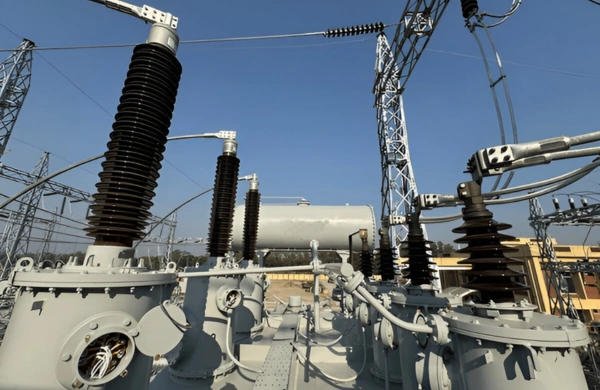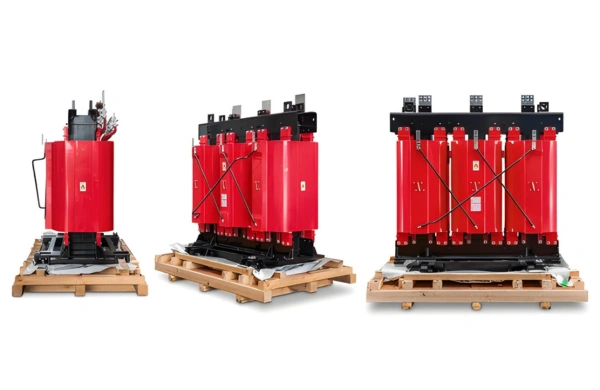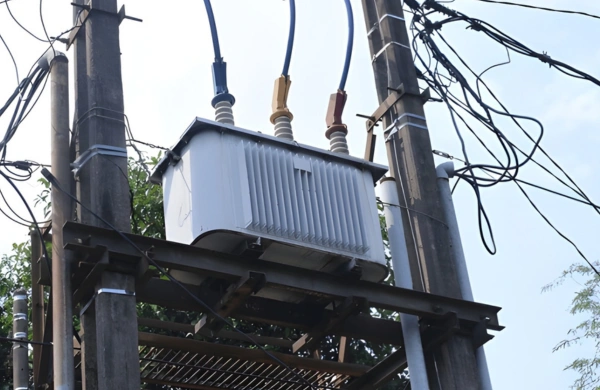Introduction
In every power system — whether industrial, commercial, or utility-scale — accurate current measurement is fundamental to reliability and safety. Current transformers (CTs) are essential for monitoring and protection, converting high current levels in power lines into manageable values for meters and relays. Without them, accurate power measurement, fault detection, and load management would be impossible.
Zetwerk as one of the leading current transformers manufacturers delivers precision-engineered transformers that meet global standards for metering and protection. Designed for long-term stability, each unit is type-tested for accuracy, insulation, and thermal endurance. By combining advanced manufacturing, robust materials, and design flexibility, Zetwerk ensures CTs that deliver dependable performance in demanding electrical environments across North America.
Know About How Current Transformer Manufacturers
Ensure Accurate Power Monitoring
1. The Role of Current Transformers in Power Systems
Current transformers are key components that maintain the integrity of power measurement and system protection. Their primary purpose is to reproduce the current in the primary circuit at a scaled-down value in the secondary circuit. This allows measurement devices and protection relays to operate safely without direct exposure to high-voltage lines.
Primary applications include:
- Substations and switchgear: CTs monitor current flow and enable overcurrent and differential protection schemes.
- Industrial panels: They provide safe current measurement for motors, drives, and control systems.
- Energy meters and monitoring systems: Accurate CTs ensure precise billing and energy audits.
- Power testing setups: Used in calibration and testing systems that require reference accuracy.
Without CTs, high-voltage systems would require direct measurement equipment — which is both unsafe and impractical. CTs ensure electrical isolation while delivering precision measurement over a wide current range.
2. Construction and Design Standards
A current transformer’s performance depends heavily on its design and material quality. The construction involves several critical components:
- Magnetic Core: Made from grain-oriented silicon steel or nanocrystalline materials to achieve high permeability and minimize hysteresis losses.
- Primary and Secondary Windings: Copper windings are used for conductivity and durability, precisely wound to maintain the required ratio accuracy.
- Insulation: Resin cast, oil-immersed, or dry-type insulation depending on application voltage and environmental conditions.
- Enclosure: Designed to protect against dust, moisture, and mechanical stress, often complying with IP55 or higher protection levels.
Zetwerk adheres to IEC 61869, IEEE C57.13, and ANSI standards, ensuring every CT meets internationally recognized benchmarks. Each design undergoes ratio error, phase displacement, and dielectric tests before shipment.
3. Types of Current Transformers Used in Industry
CT designs vary based on installation and purpose. The most common types include:
- Wound Type CTs: Primary winding is physically wound around the magnetic core — suitable for low primary currents.
- Bar Type CTs: Use a bar conductor as the primary winding — ideal for switchgear applications.
- Window Type CTs: Feature a ring core through which the primary cable or busbar passes, simplifying retrofitting in existing systems.
- Protection CTs: Designed for system protection, focusing on high accuracy during fault conditions.
- Metering CTs: Calibrated for precise ratio and phase accuracy under normal load conditions.
Zetwerk’s engineering team helps customers select CT configurations that balance burden, accuracy class, and installation method based on project requirements.
4. Understanding Accuracy Classes and Burden Ratings
Accuracy class defines how closely a CT reproduces the actual primary current. Common accuracy classes include 0.2S, 0.5, 1.0, 3.0 for metering and 5P10, 10P20 for protection.
- Metering CTs prioritize ratio precision at lower loads, ensuring reliable billing and energy monitoring.
- Protection CTs maintain accuracy even under high fault currents, preventing relay maloperation.
Burden rating indicates the total impedance (in VA) that the CT secondary circuit can drive while maintaining its accuracy. Typical burdens range from 5 VA to 30 VA depending on the system configuration. Zetwerk calibrates CTs to maintain precision across a wide range of burdens and load conditions.
5. Zetwerk’s Manufacturing Process and Quality Control
Zetwerk integrates modern manufacturing technology and rigorous quality assurance to ensure consistency and long life across all CT models.
Manufacturing highlights include:
- Automated coil winding ensures precision layer alignment and minimal resistance variation.
- Core annealing reduces residual stress and improves magnetic properties.
- Vacuum resin casting eliminates voids and moisture intrusion, critical for long-term insulation reliability.
- Thermal aging and short-time current testing simulate field conditions to validate operational endurance.
- Digital ratio and polarity testing performed at multiple frequencies to confirm linearity and phase accuracy.
Every CT undergoes routine, type, and special tests according to IEEE and IEC standards. Results are digitally logged for traceability, ensuring each product’s conformity to technical specifications.
6. Application-Specific Customization
Zetwerk’s CTs are engineered to serve diverse industrial, commercial, and utility environments.
Examples include:
- OEM panel builders: Compact CTs with high accuracy for switchboards and control panels.
- Substations and utilities: Outdoor oil-immersed CTs designed for high voltage insulation and thermal endurance.
- Renewable and distributed energy systems: CTs optimized for inverter-based applications and harmonic environments.
- Testing and calibration labs: Ultra-precision CTs with minimal phase displacement.
Each unit can be customized for primary current range, insulation class, burden rating, and environmental specifications — ensuring perfect integration with system design.
7. Safety and Long-Term Reliability
CTs handle high fault currents, making safety-critical design non-negotiable. Zetwerk’s CTs incorporate:
- Secondary shorting terminals to prevent open-circuit hazards.
- Temperature-stable insulation materials rated up to 120°C.
- Sealed enclosures for resistance to moisture and dust ingress.
- Shock-tested mounting designs suitable for vibration-prone industrial setups.
Long-term reliability is achieved through accelerated aging tests and field validation in real-world operating conditions.
Conclusion
From power generation and transmission to industrial automation and metering systems, current transformers are indispensable for accurate current monitoring and protection. As energy systems evolve toward automation and digital integration, the precision and reliability of CTs become even more critical.
Zetwerk’s transformers are engineered to meet the rigorous demands of industrial and utility environments in North America. Every unit is backed by advanced design, international certification, and in-house testing infrastructure. Through full manufacturing control and transparent quality documentation, Zetwerk ensures dependable performance, cost efficiency, and confidence in every project.




FAQs
a. It scales high primary currents to safe, measurable values for metering and protection while maintaining electrical isolation.
a. Zetwerk CTs comply with IEC 61869, IEEE C57.13, and ANSI standards for performance and safety.
a. Available classes include 0.2S, 0.5, 1.0, 3.0, 5P10, and 10P20, covering both metering and protection applications.
a. Yes. Zetwerk designs CTs for unique current ratios, burdens, and environmental conditions as per customer specifications.
a. Each CT undergoes vacuum insulation, polarity, thermal, and dielectric testing under ISO-controlled conditions to ensure decades of service life.








